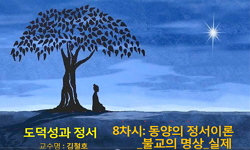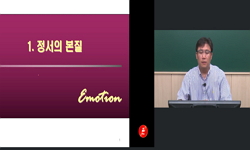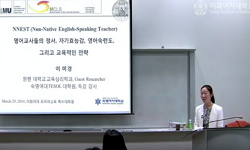Zhang Lu’s images work as a medium for rhythms of others, enabling the others to talk to us. His movies question those possessed by complex layers of discourses that are not free from imagined geography of the 20th century-like nation-states by exp...
http://chineseinput.net/에서 pinyin(병음)방식으로 중국어를 변환할 수 있습니다.
변환된 중국어를 복사하여 사용하시면 됩니다.
- 中文 을 입력하시려면 zhongwen을 입력하시고 space를누르시면됩니다.
- 北京 을 입력하시려면 beijing을 입력하시고 space를 누르시면 됩니다.
https://www.riss.kr/link?id=A104303471
-
저자
천진 (서울시립대학교 도시인문학연구소)

- 발행기관
- 학술지명
- 권호사항
-
발행연도
2017
-
작성언어
Korean
-
주제어
파편들 ; 장소감 ; 장소성 ; 장소의 정치 ; 리듬분석 ; 시간의 디테일 ; 정서 ; 타자의 윤리 ; 타자의 질문 ; Fragments ; Xijie (detail) ; Placelessness ; Sense of Place ; Authenticity of Place ; Placeness ; Imagined Geography ; Grain in Ear ; Yili ; Chongqing
-
등재정보
KCI등재
-
자료형태
학술저널
-
수록면
255-282(28쪽)
-
KCI 피인용횟수
0
- DOI식별코드
- 제공처
- 소장기관
-
0
상세조회 -
0
다운로드
부가정보
다국어 초록 (Multilingual Abstract)
Zhang Lu’s images work as a medium for rhythms of others, enabling the others to talk to us.
His movies question those possessed by complex layers of discourses that are not free from imagined geography of the 20th century-like nation-states by exposing voice and gesture of others in dispersed history. Is there anything other than time of nation-states straightly running forward, space for humans recognized as subjects of the nation, and modernity accelerating in this time and space that possess each of their orbits for movement in this world? Using images, Zhang Lu’s movies explore how to mediate displaced life that consistently fails to be rooted in its own place of life inside and outside the orbit and its rhythms.
Zhang Lu identifies the rhythms of such fragments as Xijie (detail) and an emotional issue ever remaining alive throughout time. His ‘Xijie’ aims to explore specific social life experiences and memories facing uncertainties. There is a concerned consideration of the issue to catch Xijie and emotions of various layers of time always stemming and growing from the lowest part of a society. This is not unrelated to his sense of time and place. Zhang Lu enters deep into a place, feels the rhythms and emotions using five senses, and tries to mediate them as images of a certain quality and sound characteristic. This is somewhat different from the placeness of cameras of imperialists who believed in their being objective and scientific. Their places are like a flat and empty space on the map, waiting to be explored and conquered by external forces. However, space is not an empty space for Zhang Lu. In this place, there are rhythms that are flowing. The rhythms standing for strength of repetition and hardness created as a body (life) work in harmony with energy in time and space. Zhang Lu’s attitudes to time and space are distanced a little from the frequently discussed modern time and space, providing a historical narration based on linear time and empty space. Sensing Xijie and emotions of time are also an analysis of various rhythms flowing while crossing the world. Zhang Lu locates his camera in full sincerity to shoot these rhythms. This camera becomes available when you meet time and space with a genuine sense of placeness or an attitude of your mind to open your senses to everything that a space shows and their significance and to try to understand and respect the significance. As for Kino eye, it certainly originates from the works of eyes but does not incompletely depend solely on eyes.
Opening your mind to significance of a place works through five-sense and whole-body experiences and senses and this occurs only when Xijie and emotions of time can be caught. What is needed is one’s senses through a ‘whole body’, rather than dependence on eyes only. This is not about a visible, outer and virtual present that appears when you depend on eyes only. It is about how to explore the presence that moves beyond, or what appears visually as warmth, communication and pulsation.
The author of this paper tried to analyze specifically the issues of rhythms and others pertaining to fragments of Grain in Ear, Yili and Chongqing based on the attitude of time and place of Zhang Lu. Grain in Ear was analyzed based on the subjects like “Soonhee’s old and worn house” and “Soonhee’s scaling”. Yili and Chongqing were analyzed through “time and space of urban fragments” and “oblivion of death and angels". Various rhythms that the fragments show in time and space are not only those belonging to people who are weak and good. The images also inexorably reflects on the properties of force and banality of evil of this world.
국문 초록 (Abstract)
이 글은 張律의 영화 〈망종〉 〈중경〉 〈이리〉를 장소성을 중심으로 분석한 글이다. 張律의카메라는 탈냉전 이후 전지구적 자본주의가 확산되는 동아시아의 장소들을 다루고 있다. 중국...
이 글은 張律의 영화 〈망종〉 〈중경〉 〈이리〉를 장소성을 중심으로 분석한 글이다. 張律의카메라는 탈냉전 이후 전지구적 자본주의가 확산되는 동아시아의 장소들을 다루고 있다. 중국, 몽고, 북한과 중국의 접경지대, 남한의 중소도시들에 이르기까지 그는 동아시아의 근대에지속되고 있는 네이션과 국가, 자본의 절합의 과정이 일어나는 장소에서 영화적 재현을 시도한다. 그러나 그의 카메라는 이 장소들에서 고정된 지리적 실체를 가정하고 그것을 발견하려는 태도를 취하지 않는다. 영화에서 우리는 우리의 익숙한 언어와 이미지로 구축된 지리적`문화적 실체를 결코 발견할 수가 없다. 오히려 그의 영화에서 장소는 수많은 배제와 포섭 과정에서 타자로 불렸던 파편들의 육체, 역사적 파편들의 구체적 일상을 다루며, 이 가운데 형성되고 사라지는 불확실한 다양한 장소감을 카메라로 매개하고 있다. 이것은 또한 고정되어 있고 안정되어 있다고 생각하는 우리의 장소감에 균열을 낸다. 역사의 파편들은 자본과 국가의흐름에 적극적으로 포섭되기도 하고 때로는 불편해하고 힘들어 하는 가운데, 불확실한 삶 속에서 끊임없이 타인과의 접촉하는 가운데 장소를 만들고 있으며 이 장소는 형성되고 소멸되는 과정을 반복한다. 장소는 지리적으로 고정된 실체가 아니라, 파편들의 사회적 관계 속에서욕망, 결여, 조급함, 비열, 환대, 친밀 등 다양한 정서가 뒤엉킨 채 끊임없이 재구성되며 우리에게 다가오고 사라지고 있다. 張律의 영화는 시간의 디테일과 정서가 살아있는 파편들의 생존상태, 이 생태의 위상이 어떻게 영화로 재현되는가를 모험하는 것에 가깝다. 생존상태는 리얼하게 우리의 익숙한 재현체계로 포착되는 것 같지만, 타자들이 시간과 장소에 뿌리내리지못하고 끊임없이 흔들릴 때 타자의 장소성은 리얼한 실재의 세계를 넘어 숨소리, 유령, 환상등으로 틈입을 통해 계속해서 주체의 자리에 말을 걸며 움직이는 가운데 형성된다. 영화는타자의 재현에 대한 대안을 제시하는 것이라기보다는 그들이 어떻게 질문하고 말을 거는가를사고하도록 인식 틈새, 여백을 찾는다.
참고문헌 (Reference)
1 김소영, "한국영화의 국경의 문제, 경계의 기억: 장률의 〈두만강〉을 중심으로" 2011
2 정성일, "필사의 탐독" 바다출판사 2010
3 임춘성, "포스트사회주의 시기 중국소수민족 영화를 통해본 소수민족 정체성과 문화정치 ― 張律의 영화를 중심으로" 한국중국현대문학학회 (58) : 217-250, 2011
4 김소영, "파국의 지도" 현실문화 2014
5 육상효, "침묵과 부재: 장률 영화 속의 디아스포라" 한국콘텐츠학회 9 (9): 163-174, 2009
6 이창휘, "중국을 인터뷰하다" 창비 2013
7 김태만, "재중 코리안 디아스포라의 트라우마" 한국중국현대문학학회 (54) : 237-270, 2010
8 에드워드 렐프, "장소와 장소상실" 논형 2005
9 김지미, "장률 영화에 나타난 육화된 ‘경계’로서의 여성 주체 -<경계>, <이리>, <중경>을 중심으로" 한국여성문학학회 22 (22): 123-146, 2009
10 김시무, "장률 감독과 트랜스-로컬 시네마" 한국영화학회 (60) : 57-88, 2014
1 김소영, "한국영화의 국경의 문제, 경계의 기억: 장률의 〈두만강〉을 중심으로" 2011
2 정성일, "필사의 탐독" 바다출판사 2010
3 임춘성, "포스트사회주의 시기 중국소수민족 영화를 통해본 소수민족 정체성과 문화정치 ― 張律의 영화를 중심으로" 한국중국현대문학학회 (58) : 217-250, 2011
4 김소영, "파국의 지도" 현실문화 2014
5 육상효, "침묵과 부재: 장률 영화 속의 디아스포라" 한국콘텐츠학회 9 (9): 163-174, 2009
6 이창휘, "중국을 인터뷰하다" 창비 2013
7 김태만, "재중 코리안 디아스포라의 트라우마" 한국중국현대문학학회 (54) : 237-270, 2010
8 에드워드 렐프, "장소와 장소상실" 논형 2005
9 김지미, "장률 영화에 나타난 육화된 ‘경계’로서의 여성 주체 -<경계>, <이리>, <중경>을 중심으로" 한국여성문학학회 22 (22): 123-146, 2009
10 김시무, "장률 감독과 트랜스-로컬 시네마" 한국영화학회 (60) : 57-88, 2014
11 주진숙, "장률 감독 영화에서의 경계, 마이너리티, 그리고 여성" 한국영화학회 (42) : 597-620, 2009
12 신동순, "장뤼(張律, ZhangLu)영화와 디아스포라 이중의식" 한국중국소설학회 (40) : 301-320, 2013
13 조명기, "장뤼(張律)와 영화 「두만강」의 공간 위상" 중국학연구회 (57) : 621-643, 2011
14 박노종, "영화 속 조선족(朝鮮族)의 디아스포라와 정체성 고찰 - 장률(張律)과 그의 영화를 중심으로 -" 동북아시아문화학회 1 (1): 23-41, 2012
15 정성일, "언젠가 세상은 영화가 될 것이다" 바다출판사 2010
16 한병철, "시간의 향기" 문학과지성사 2013
17 유진월, "소수자 영화와 타자의 재현 -장률의 영화를 중심으로" 인문과학연구소 (37) : 33-56, 2013
18 아르준 아파두라이, "소수에 대한 두려움" 에코리브르 2011
19 이소마에 준이치, "상실과 노스탤지어" 문학과 지성 2014
20 발터 벤야민, "발터 벤야민의 문예이론" 민음사 2003
21 프라센지트 두아라, "민족으로부터 역사를 구출하기" 삼인 2004
22 앙리 르페브르, "리듬분석: 공간, 시간, 그리고 도시의 일상생활" 갈무리 2013
23 장슬기, "로컬리티 인문학" 부산대 한국민족문화연구소 2014
24 강성률, "떠도는 인생, 지켜보는 카메라-장률 영화의 디아스포라" 현대영화연구소 7 (7): 91-118, 2011
25 문관규, "동아시아 영화 작가의 디아스포라적 경향과 트랜스 로컬 시네마의 가능성" 민족미학회 12 (12): 289-303, 2013
26 우혜경, "다큐멘터리 〈장률, 장률〉 제작 연구" 한국예술종합학교 2010
27 서경식, "경계에서 만나다: 디아스포라와의 대화" 현암사 2013
28 천진, "‘행복’의 윤리학: 1900년대 초 경제와 윤리 개념의 절합을 통해 본 중국 근대 개념어의 형성" 한국중국어문학회 75 : 193-216, 2013
29 Baudrillard, Jean, "The Illusion of the End, Translated by Chris Tuner" Stanford University Press 1994
30 Tuan, Yi-Fu, "Space and Place: The perspective of experience" University of Minnesota Press 1977
31 Freeman, Carla, "Is Local: Global as Feminine: Masculine? Rethinking the Gender of Globalization" 26 (26): 2001
32 Pandey, Gyanendra, "In Defence of the Fragment: Writing about Hindu-Muslim Riots in India Today" 1991
33 Dirlik, Arif., "Global/Local: Cultural Production and Transnational Imaginary" Duke University Press 1996
34 Massey, Doreen, "A Global Sense of Place" 38 (38): 1991
동일학술지(권/호) 다른 논문
-
- 한국중국어문학회
- 박홍준 ( Park Hong-jun )
- 2017
- KCI등재
-
당대(唐代) 교방(敎坊) 대곡(大曲)과 당오대문인사(唐五代文人詞)의 희극성(戱劇性)에 대한 상관적 고찰
- 한국중국어문학회
- 김수희 ( Kim Soohee )
- 2017
- KCI등재
-
- 한국중국어문학회
- 정진걸 ( Jeong Jin-geol )
- 2017
- KCI등재
-
- 한국중국어문학회
- 강민호 ( Kang Minho )
- 2017
- KCI등재
분석정보
인용정보 인용지수 설명보기
학술지 이력
| 연월일 | 이력구분 | 이력상세 | 등재구분 |
|---|---|---|---|
| 2026 | 평가예정 | 재인증평가 신청대상 (재인증) | |
| 2020-01-01 | 평가 | 등재학술지 유지 (재인증) |  |
| 2017-01-01 | 평가 | 등재학술지 유지 (계속평가) |  |
| 2013-01-01 | 평가 | 등재 1차 FAIL (등재유지) |  |
| 2010-01-01 | 평가 | 등재학술지 유지 (등재유지) |  |
| 2008-01-01 | 평가 | 등재학술지 유지 (등재유지) |  |
| 2006-01-01 | 평가 | 등재학술지 유지 (등재유지) |  |
| 2004-01-01 | 평가 | 등재학술지 유지 (등재유지) |  |
| 2001-07-01 | 평가 | 등재학술지 선정 (등재후보2차) |  |
| 1999-01-01 | 평가 | 등재후보학술지 선정 (신규평가) |  |
학술지 인용정보
| 기준연도 | WOS-KCI 통합IF(2년) | KCIF(2년) | KCIF(3년) |
|---|---|---|---|
| 2016 | 0.26 | 0.26 | 0.29 |
| KCIF(4년) | KCIF(5년) | 중심성지수(3년) | 즉시성지수 |
| 0.28 | 0.32 | 0.635 | 0.21 |




 KCI
KCI







